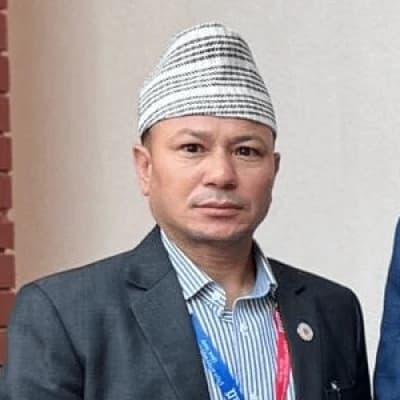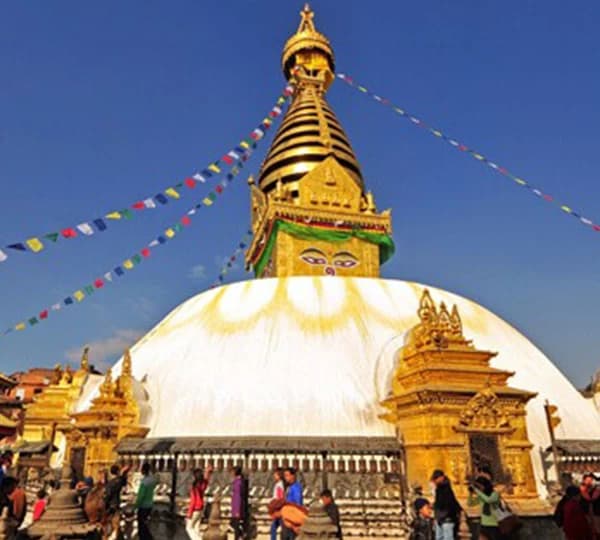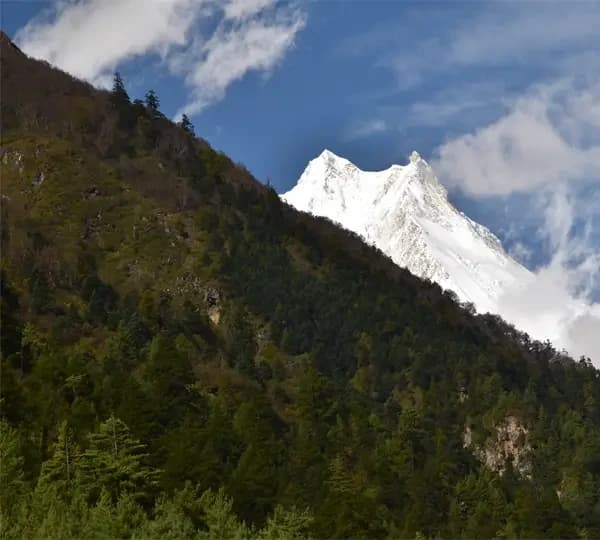How hard is the Everest High Pass Trek?
As mentioned above, the Everest High Pass Trek is rated a “challenging” trek, and some sections are like heaven as you will cover from 4,445 m to Renjo La (5,440 m) and descend to Gokyo Lake (4,700 m). Of course, it is hard, but on your arrival at the top, you will be rewarded with a 360-degree panoramic mountain view and feel like you are above the mountain.
What is the best route for the Everest High Pass trek?
Different trekkers have different thoughts. However, the Namche-Thame-Lungden-Renjola top-Gokyo-Chola pass-Everest Base Camp and Kongma La pass trek routes will be the most convenient for all. Please see the itinerary below.
Day 01: Kathmandu-KuKla and trek to Phakding (2,600 m)/8 km. Overnight at the Guesthouse.
Day 03: Trek to Namche Bazaar (3,440 m)/5 hours/12 km.
Day 04: Acclimatization day and explore the Khumjung village, Khumjung Monastery, and Hillary School, and return to Namche Bazaar via Everest View Hotel.
Day 05: Trek to Thame Village and experience the Thame Dechen Chokhorling Monastery. 4 hrs/3780 m/6 km.
Day 06: Trek to Lungden (4,500)/6 hours/8 km.
Day 07: Trek to Gokyo Lake (4,700 m) via Renjo La Pass. 9 km/7 hrs
Day 08: Explore the Gokyo Lake, Gokyo Ri, and Cho Oyu Base Camp as per your interest.
Day 09: Trek to Dragnag (4700 m, 4 hours, 6 km).
Day 10: Trek to Dzongla over a Cho La pass (5,416 m.)
Day 11: Trek to Lobuche (4900 m)/7 km/5 hours.
Day 12: Trek to Gorak Shep, then visit Everest Base Camp, and back to Gorak Shep (5,130 m, 3 hours, 13 km).
Day 13: Morning hike to Kala Patthar (5,545 m) and trek to Chukung over Kongmala Pass (16 km/8 hours).
Day 14: Trek to Tengboche Monastery. 5 hrs/10 km
Day 15: Trek to Namche Bazaar, 11 km/5 hours.
Day 16: Trek to Lukla (20 km/6 hours).
Day 17: Morning flight back to Kathmandu (Note: This flight may not go to Kathmandu directly due to the heavy air traffic, so during the busy seasons, the airline companies reschedule the flight to Ramechhap.)
How hard are Cho La Pass and Kongma La Pass?
After completing the Renjo La and Gokyo Valleys, the trek to the Chola Pass will be less hard anyway! Of course, you have to cross Glacier Moraine, a steeper hill, and a long descent will work out your muscles, but it is priceless. The Chola Pass is a common pass for all trekkers, and everybody made it! It is a less difficult pass compared to Renjola and Kongmala.
Kongmala Pass could be much harder because this is not a common pass, and there is no regular trekking path due to the heavy snowfall in winter. The top of Kongmala Pass (5,550 m) is higher than the Everest base camp and similar in height to Kala Patthar. Kongma La Top offers the most picturesque and exciting Himalayan scenery, including Mt. Makalu (8,463 m), Everest(8,848 m), Lhotse (8,516 m), Cho Oyu (8,201 m), and many other small mountains. For sure, this is the most difficult but scenic pass in Sagarmatha National Park. Crossing Glacier Moraine and Glacier Lake, a narrow and windy path will make you say, “Why did I choose this trek?” but this is what you are looking for! Remember not to forget to take a professional mountain guide with you to achieve your goals.
What is the best time for the Everest High Pass Trek?
Nepal is open all year. However, the mountain is not always there, and you have to have good weather to go. Autumn (late September to early December) and spring (March to May) are the best times to go for any high-pass trek or mountaineering in Nepal. The weather is warm, and visibility is clear most of the time.
How many days are required for the Everest High Pass trek?
The Everest High Pass trek is demanding in the Khumbu region. 16 days is the best length of time to meet your goals. If you are an advanced trekker and looking for a challenging trek in the Everest region, then you may accomplish it within 14 days by skipping some leisure/acclimatization days in various places.
Is it possible to change the route of the Everest 3 Pass trek if I get sick?
The Everest High Pass Trek is challenging, and you should be physically fit. If you have the passion and dedication to reach the heights of the Himalayas, then you can do it without any problems. Choose a legal and certified trekking company where you can find a trusted guide. Your safety and satisfaction are the Global Adventure motto. A professional guide can twist the trek itinerary as per requirements. Yes, if you get altitude sickness or something happens while on the trek, we can change the trek itinerary to make your holiday safe.
What if I cancel the trip? Do I get a refund?
Global Adventure offers a lifetime deposit policy, which allows you the flexibility to change the date, transfer to another booking, or, if you wish to cancel the trip, certain cancellation charges may apply as per company policy.
What should I pack for the Everest High Passes Trekking?
The higher you go, the colder you get! This 16-day Everest High Pass trek is a teahouse trek in the Everest region. You are staying in a nice and warm guest house every night. The rooms are comprised of blankets, pillows, and mattresses.However, it is recommended to take a private sleeping bag. You will have evening meals and breakfast at the same place where you are spending the night. The meals are warm, delicious, and hygienic. Please see here for details on the necessary trek gear.
Do I need crampons for the Everest High Pass trekking?
Prevention is better than cure! Generally, crampons are not required for this trek. But if you are planning a trek in winter, then you are advised to have it. The weather is unpredictable all over the world, so even in autumn and spring, there might be heavy snowfall. It is not like yes or no! It would be better to have it just in case.
Will I get phone reception while on the trek?
Yes, in almost every place you will have the cell phone coverage of NTC or Ncell, except in some places. In some places, you may not have coverage at all.

The Everest High Pass trek is a challenging high-altitude trek in the Everest region. However, climbing experience is not required. It is recommended to have training, like walking a long distance with a 5–7 kg backpack daily before you start. You will be led by a professional guide who is already familiar with the High Passes Trek.












